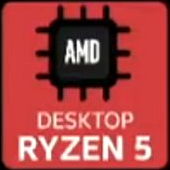Round 3: Best GPU for Linux (290 vs 970)
-
Topics
-
0
-
DuckDodgers ·
Posted in Tech News0 -
0
-
HarmlessPotato12 ·
Posted in New Builds and Planning2 -
Manishh ·
Posted in Graphics Cards3 -
2
-
0
-
2
-
0
-
0
-
-
play_circle_filled

Latest From ShortCircuit:
I tried 20 influencer foods, here are the best… and the worst…









.thumb.jpg.ab6821c090888206ddcf98bb04736c47.jpg)







Create an account or sign in to comment
You need to be a member in order to leave a comment
Create an account
Sign up for a new account in our community. It's easy!
Register a new accountSign in
Already have an account? Sign in here.
Sign In Now